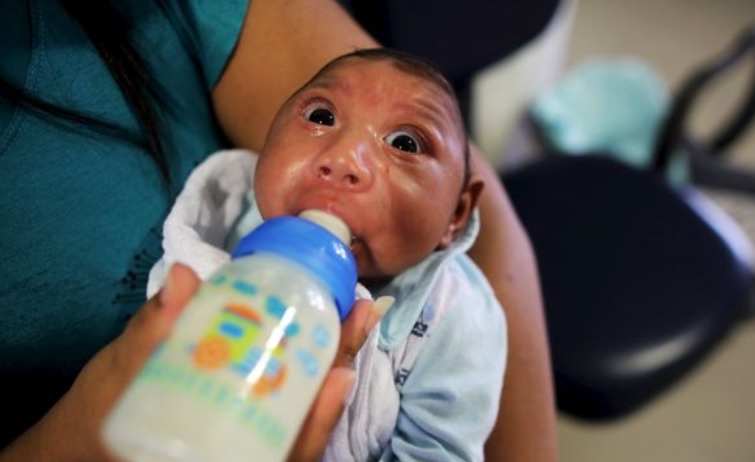Get ready to welcome the next predicted Viral outbreak – DISEASE X
Maybe a million viruses waiting to jump from animals to humans
 NepalPress
NepalPress

In the wake of the coronavirus pandemic, there is an increase in the level of understanding that there are unknown threats to mankind that can lead to the next pandemic, owing to human behaviour.
‘Disease X’ is representative of that unknown factor. It is not a disease technically but rather an area of research for scientists studying pandemics. A recent CNN report quoted Professor Jean-Jacques Muyembe Tamfum, who discovered the Ebola virus in 1976, as saying that new deadly viruses were set to hit mankind.
What is ‘Disease X’?
‘Disease X’ is a name adopted by the World Health Organisation to refer to a potential disease yet to be discovered. It is on the shortlist of pathogens, which is considered to be a blueprint for priority diseases. The WHO says that ‘Disease X’ represents “the knowledge that a serious international epidemic could be caused by a [unknown, hypothetical] pathogen currently unknown to cause human disease.”
Disease X is in the list of viruses, which include such names as Ebola, MERS, SARS, Lassa fever, Nipah, and Zika, among others.
Recent interest in ‘Disease X’
In an intriguing case, a woman in a remote village of the Democratic Republic of Congo showed symptoms of haemorrhagic fever but her test reports for various viruses including Ebola came back negative. This led to the fear of a new disease. Dr Dadin Bonkole, the woman’s physician, told an American news channel that everyone had to be frightened.
Professor Tamfum said that the new infection could be more fatal than Ebola and COVID-19. He warned that more zoonotic diseases that can get transmitted from animals to humans could arise in the future.
A CNN report said that scientists have found at least 200 such viruses that can cause disease in humans since the yellow fever in 1901. The rising number of these diseases is due to destruction of ecology and trade of wildlife, as per the experts.
Why ‘Disease X’?
“It may seem strange to be adding an ‘X’ but the point is to make sure we prepare and plan flexibly in terms of vaccines and diagnostic tests,” said advisor to the WHO committee, John-Arne Rottingen, in an interview with The Telegraph in 2018.
“We want to see ‘plug and play’ platforms developed which will work for any, or a wide number of diseases; systems that will allow us to create countermeasures at speed,” Rottingen added.
In February 2018, ‘Disease X’ was added as a placeholder for a ‘knowable unknown’ pathogen to develop new strategies for fighting such pathogens.
“The best time to prevent the next pandemic is now,” the WHO said.
Going by the example of the COVID-19 pandemic, the world needs to be wary of another pandemic, which could turn out to be worse.
POSSIBLE DISEASES THAT MAY CONTRIBUTE TO THE NEW VIRUS
ZIKA – Key facts
- Zika virus disease is caused by a virus transmitted primarily by Aedes mosquitoes, which bite during the day.
- Symptoms are generally mild and include fever, rash, conjunctivitis, muscle and joint pain, malaise or headache. Symptoms typically last for 2–7 days. Most people with Zika virus infection do not develop symptoms.
- Zika virus infection during pregnancy can cause infants to be born with microcephaly and other congenital malformations, known as congenital Zika syndrome. Infection with Zika virus is also associated with other complications of pregnancy including preterm birth and miscarriage.
- An increased risk of neurologic complications is associated with Zika virus infection in adults and children, including Guillain-Barré syndrome, neuropathy and myelitis.
NIPAH – Key facts
- Nipah virus infection in humans causes a range of clinical presentations, from asymptomatic infection (subclinical) to acute respiratory infection and fatal encephalitis.
- The case fatality rate is estimated at 40% to 75%. This rate can vary by outbreak depending on local capabilities for epidemiological surveillance and clinical management.
- Nipah virus can be transmitted to humans from animals (such as bats or pigs), or contaminated foods and can also be transmitted directly from human-to-human.
- Fruit bats of the Pteropodidae family are the natural host of Nipah virus.
- There is no treatment or vaccine available for either people or animals. The primary treatment for humans is supportive care.
- The 2018 annual review of the WHO R&D Blueprint list of priority diseases indicates that there is an urgent need for accelerated research and development for the Nipah virus.
EBOLA – Key facts
- Ebola virus disease (EVD), formerly known as Ebola haemorrhagic fever, is a rare but severe, often fatal illness in humans.
- The virus is transmitted to people from wild animals and spreads in the human population through human-to-human transmission.
- The average EVD case fatality rate is around 50%. Case fatality rates have varied from 25% to 90% in past outbreaks.
- Community engagement is key to successfully controlling outbreaks.
- Good outbreak control relies on applying a package of interventions, namely case management, infection prevention and control practices, surveillance and contact tracing, a good laboratory service, safe and dignified burials and social mobilisation.
- Vaccines to protect against Ebola are under development and have been used to help control the spread of Ebola outbreaks in Guinea and in the Democratic Republic of the Congo (DRC).
- Early supportive care with rehydration, symptomatic treatment improves survival. There is no licensed treatment proven to neutralize the virus but a range of blood, immunological and drug therapies are under development.
- Pregnant and breastfeeding women with Ebola should be offered early supportive care. Likewise vaccine prevention and experimental treatment should be offered under the same conditions as for non-pregnant population.














